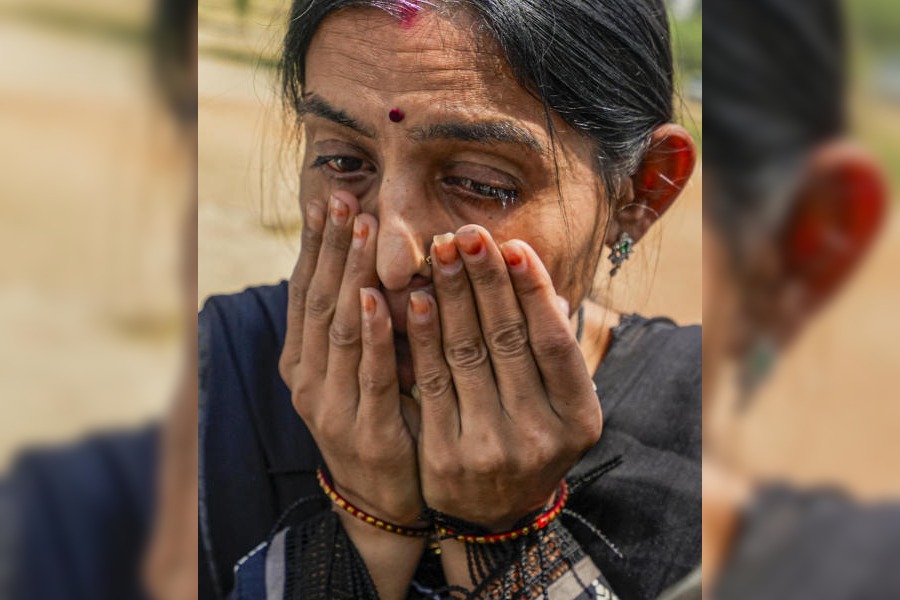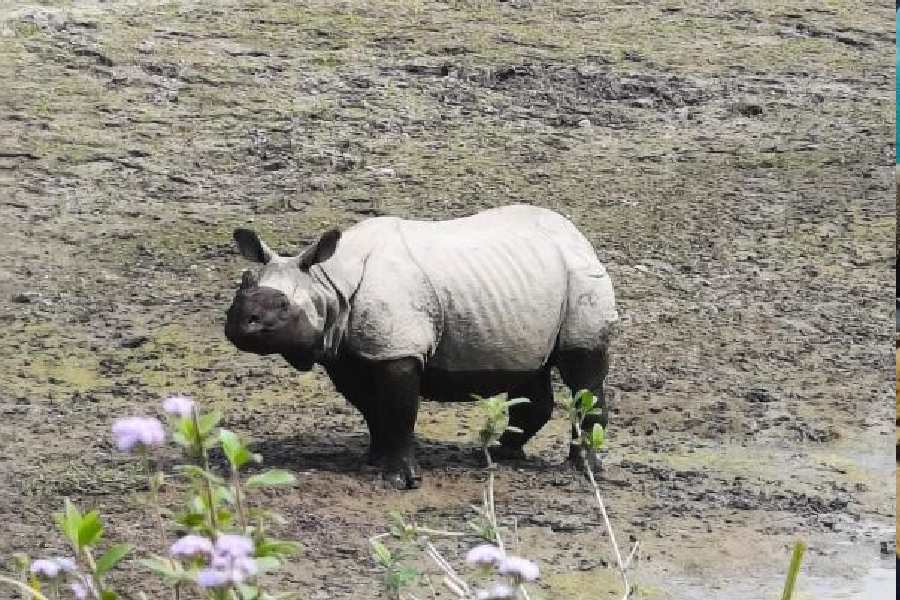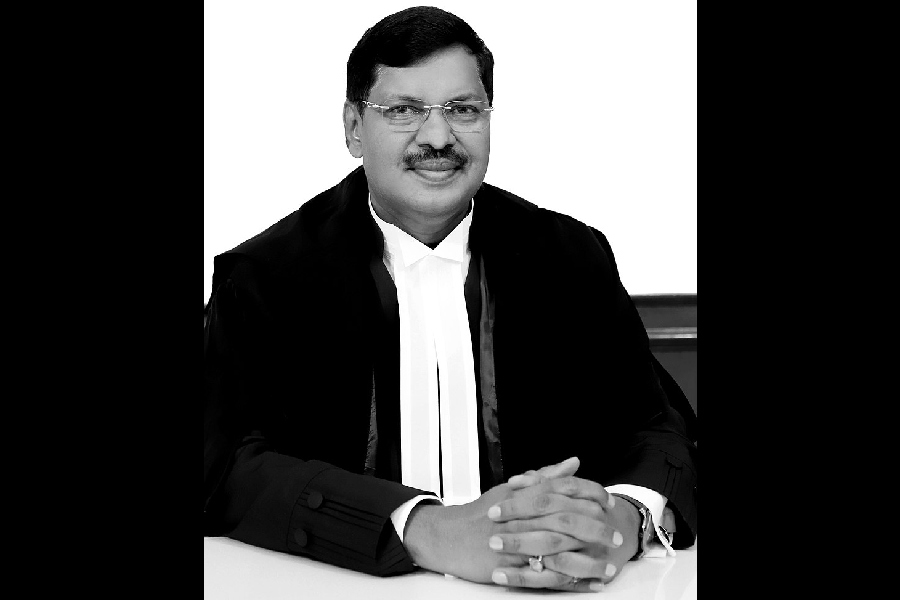 |
| Kishun Bedia (in white undershirt) with other villagers near a water supply tank in Sonuabeda, Ranchi, on Sunday. Picture by Hardeep Singh |
New Delhi, Dec. 1: It is a watershed moment in the lives of 50 tribal families of a hilly hamlet in Ranchi district, 50km from the capital. A check dam on a stream has transformed 100 acres of wasteland into farmland, making it the Centre’s model for similar initiatives under MGNREGS or Integrated Watershed Management Programme (IWMP) across the country.
For the first time, residents of Sonuabeda village under Angara block — foragers of minor forest produce, casual farmers at best — can think of agriculture as a lucrative career that yields a yearly income of Rs 1.5 lakh to Rs 2 lakh per family.
Cultivable farmland of Sonuabeda village under Angara block increased to 110 acres from mere 10 acres a year ago, thanks to the check dam.
Slowly, villagers’ source of livelihood is shifting from collecting forest produce to farming three crops a year. This year, villagers have harvested kharif paddy on 110 acres. They are looking forward to grow brinjals and potatoes during the rabi season and mulling on pulses.
An inspired Union rural development ministry will ask other states to identify potential projects to replicate Sonuabeda’s success story.
“Check dams mean permanent job security for tribal families. We will ask states to take up similar projects under MGNREGS or IWMP,” Union rural development secretary L.C. Goyal said.
The check dam project, implemented under IWMP locally through Ramakrishna Mission, is a simple idea with a huge impact. Built at a cost of Rs 40 lakh, stored water is supplied through pipes downstream.
“No power or pump set is needed. Gravity does the job on hilly terrain,” Jharkhand state watershed mission special secretary-cum-chief executive officer B. Nijalingappa said about the 11-fold increase in farmland.
“Earlier, Sonuabeda hardly had cultivable land. Due to hills, irrigation was a problem, which led to farming on only 10 acres on side of the stream. Once the stream got a check dam, water could be held and supplied. That’s how some 100 more barren acres became cultivable,” Nijalingappa said,
“It’s a sustainable livelihood project where a one-time expenditure will sustain it for years,” Jharkhand rural development secretary Arun Kumar said.
“So far, people of the area were completely dependent on collecting and selling minor forest produce, an activity that could give them a daily income of only Rs 50 to Rs 100,” Kumar said. “But now, there is a sea change in fortunes.”
Kumar said Jharkhand had a huge tract of hilly wasteland. That land could be transformed to fertile farmland.
Union rural development secretary Goyal said the Mahatma Gandhi National Rural Employment Guarantee Act (MGNREGA) would focus on taking up similar projects.
The Centre spends around Rs 32,000 crore annually under MGNREGA that guarantees up to 100 job days for every rural household.
India has about 3,166 lakh hectares of wasteland, with Rajasthan (85 lakh hectares), Jammu & Kashmir (75 lakh hectares) and Maharashtra (40 lakh hectares) being the top three states.
The other states with a significant amount of wasteland are Andhra Pradesh and Himachal Pradesh (38 lakh hectares each), Gujarat (22 lakh hectare) and Odisha (20 lakh hectare). Jharkhand has 12 lakh hectares of wasteland.
The Union ministry will also undertake a survey to find out how many durable assets — to help people earn more — have been created under MGNREGS. The Centre’s flagship scheme has attracted serious criticism from various quarters over non-creation of durable assets.
Check dam transforms arid acres into profitable farmland
- Project: Integrated Watershed Management Programme (IWMP)
- Village: Sonuabeda, Angara block, Ranchi district
- Implementing agency: Ramakrishna Mission, Ranchi
- Village panel: Sirka Narayan Soso Vivekanand Jalchhajan Samiti
- Activity: Construction of check dam-based irrigation network
- Cost: Rs 40 lakh
- Job tenure: Dec. 2012 to Feb. 2013
- Initial cultivable land: 10 acres
- Cultivable land after project: 110 acres
- Beneficiary families: 50
- Farming activity after project: Kharif paddy
- Central recognition: Model village for MGNREGS and IWMP irrigation projects for entire country
Villagers took ownership. While Ramakrishna Mission implemented the central project,
villagers set up a committee. Funds came to their bank account directly
Subhas Kumar, watershed coordinator project
Except for May, I have water for my two-acre field all the year round. Our economic situation is changing
Rustam Dileshwar Munda, Sonuabeda farmer
If this project is implemented in other forested and hilly villages, no one will remain poor
Kishun Bedia, Sonuabeda farmer











